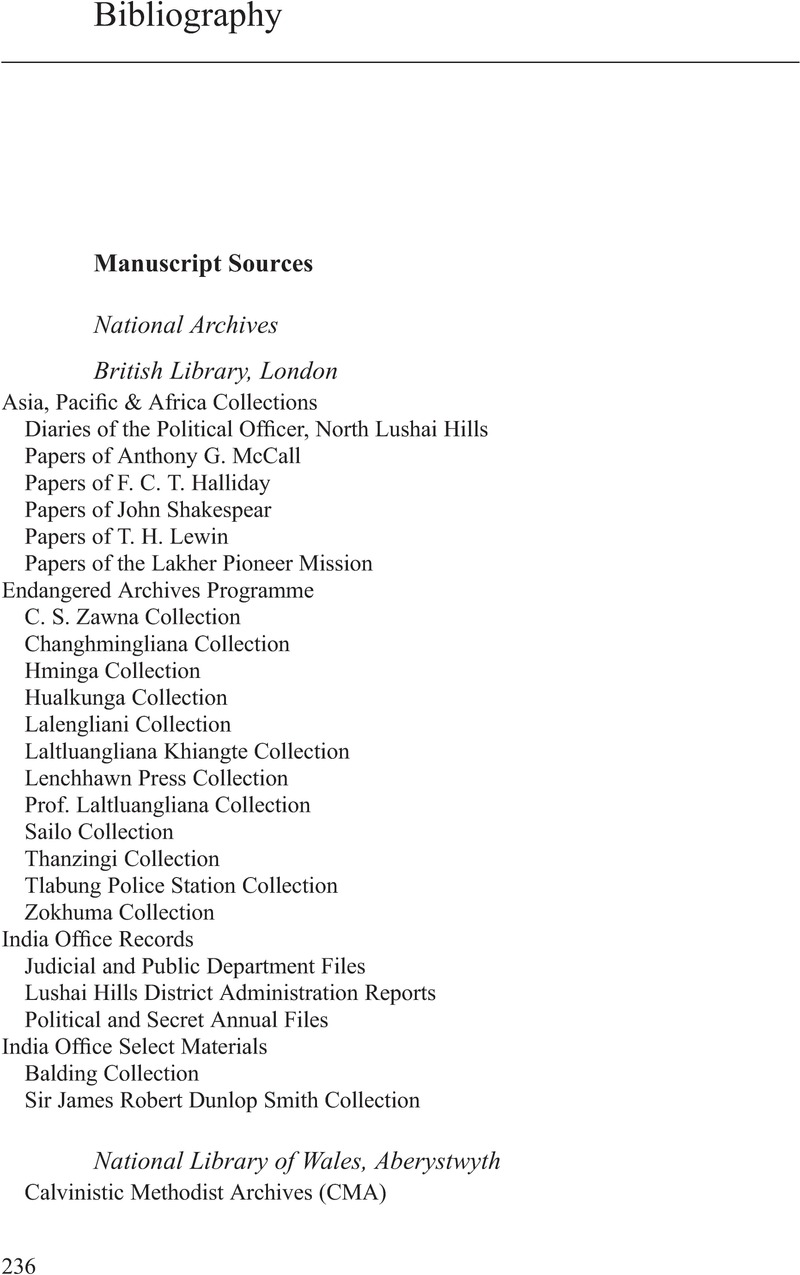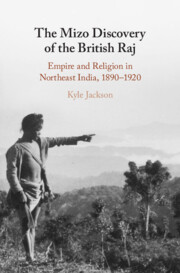Book contents
- The Mizo Discovery of the British Raj
- Additional material
- The Mizo Discovery of the British Raj
- Copyright page
- Dedication
- Contents
- Figures
- Maps
- Abbreviations
- Introduction
- 1 Coming into View
- 2 Reading the Forest
- 3 Adopting the Missionary
- 4 Sensing the Mission
- 5 Crisis and Conversion
- 6 Conclusion
- Glossary
- Bibliography
- Acknowledgements
- Index
- References
Bibliography
Published online by Cambridge University Press: 12 October 2023
- The Mizo Discovery of the British Raj
- Additional material
- The Mizo Discovery of the British Raj
- Copyright page
- Dedication
- Contents
- Figures
- Maps
- Abbreviations
- Introduction
- 1 Coming into View
- 2 Reading the Forest
- 3 Adopting the Missionary
- 4 Sensing the Mission
- 5 Crisis and Conversion
- 6 Conclusion
- Glossary
- Bibliography
- Acknowledgements
- Index
- References
Summary

- Type
- Chapter
- Information
- The Mizo Discovery of the British RajEmpire and Religion in Northeast India, 1890–1920, pp. 236 - 261Publisher: Cambridge University PressPrint publication year: 2023



